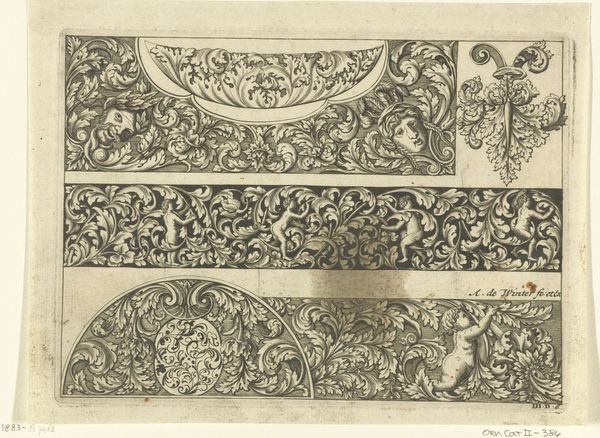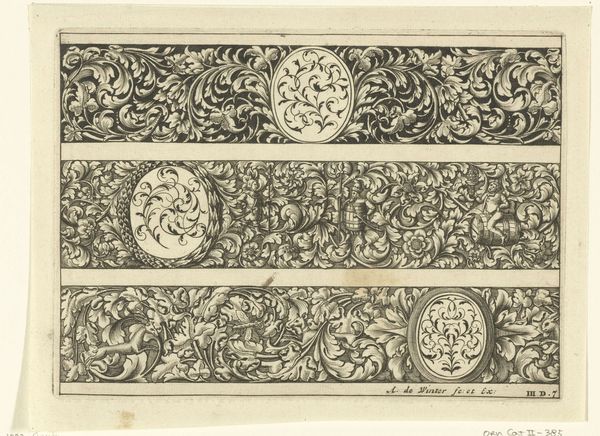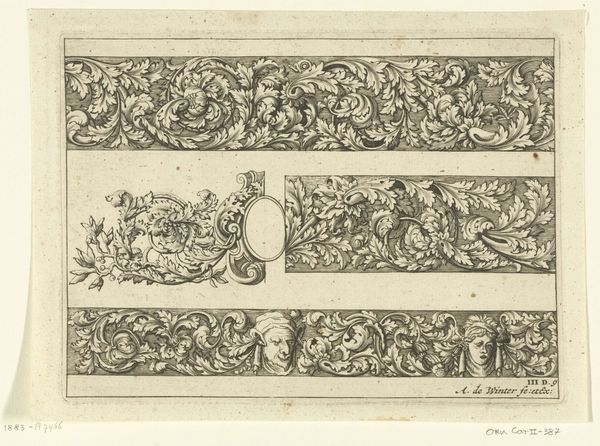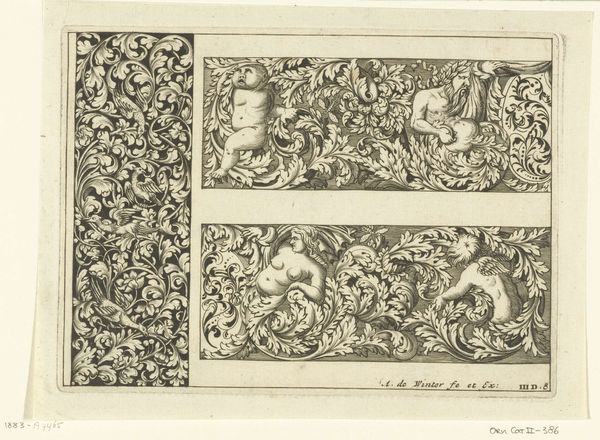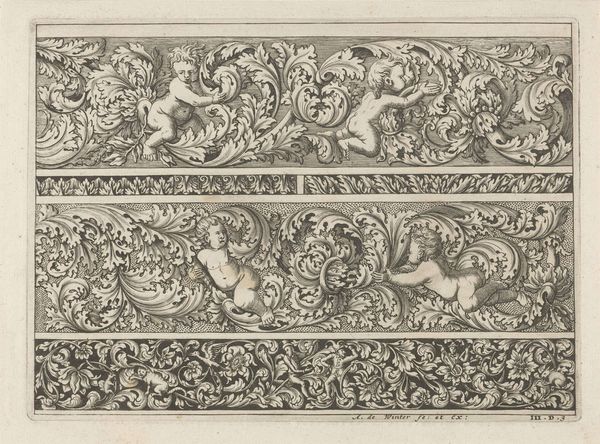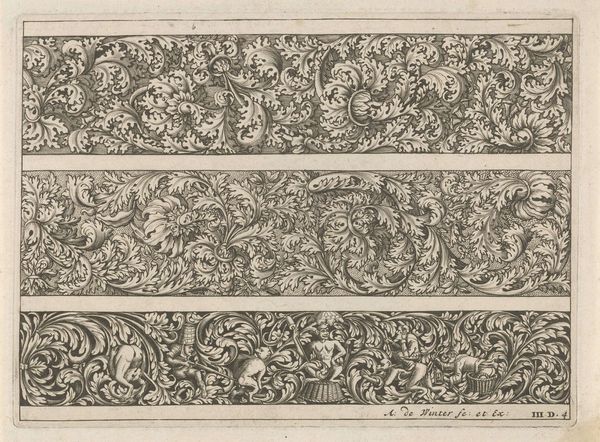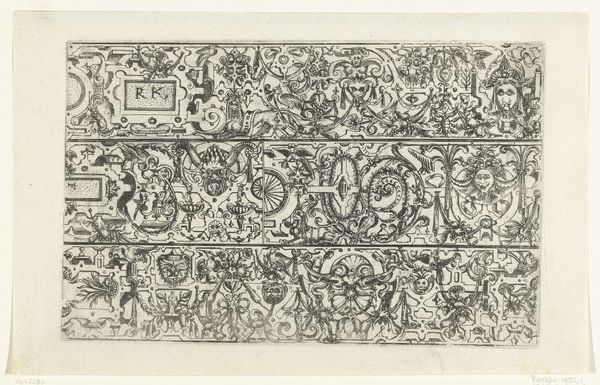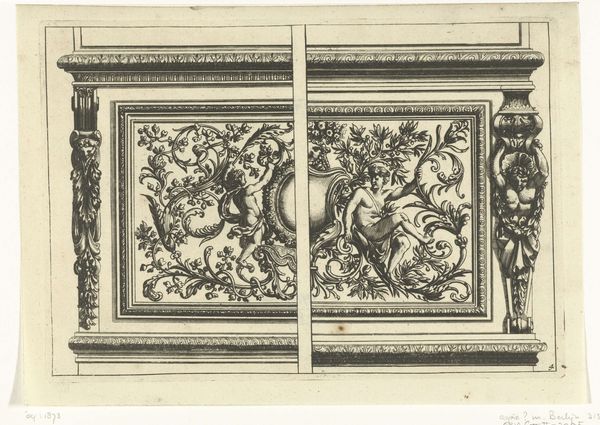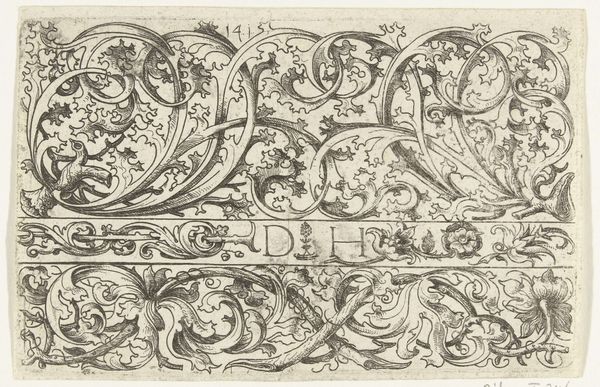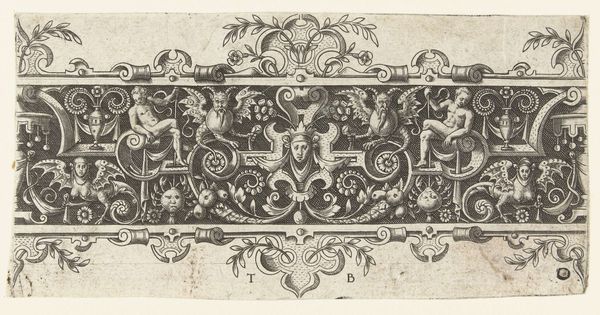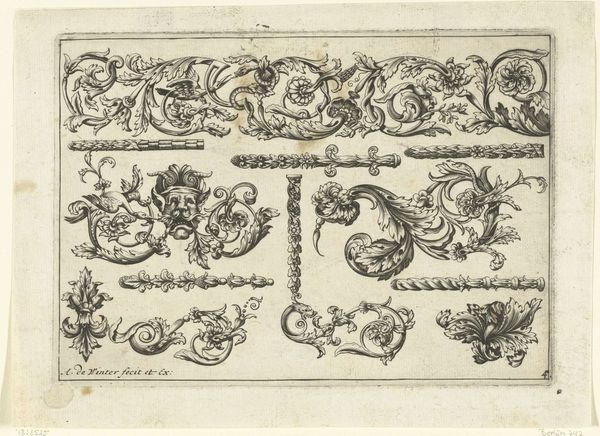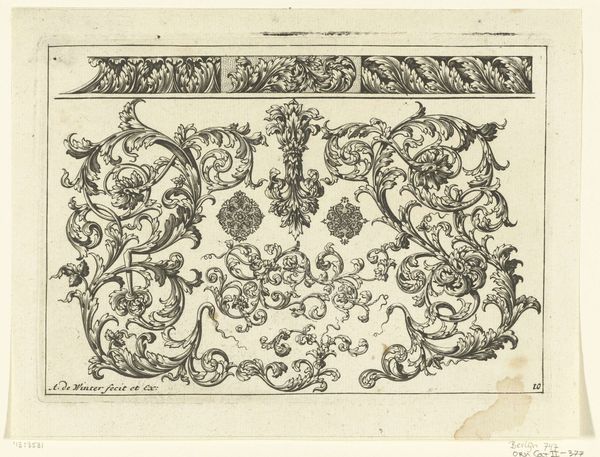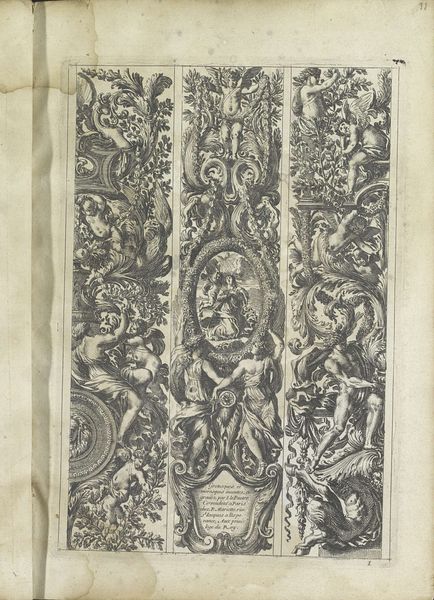
drawing, print, metal, intaglio, engraving
#
drawing
#
baroque
#
pen drawing
#
mechanical pen drawing
# print
#
metal
#
pen illustration
#
intaglio
#
old engraving style
#
pen-ink sketch
#
pen work
#
engraving
Dimensions: height 137 mm, width 187 mm
Copyright: Rijks Museum: Open Domain
Curator: Anthonie de Winter's engraving, "Drie friezen met bladranken en twee motieven," dating from 1696, immediately strikes me. The baroque details intertwine, forming three distinct friezes teeming with life. What’s your initial take? Editor: Visually, there's a dense quality here, an almost overwhelming sense of pattern. It reminds me of information overload; I’m curious how it functions beyond mere decoration, and its cultural role. Curator: Right, its dense detail hints at the socio-political context. Baroque art, as a whole, reflects the power and authority of the elite through opulent visual language, almost as a form of propaganda, or at the very least, establishing hierarchy and legacy. How do you see these recurring patterns relating to something of cultural memory? Editor: Well, the repeated leaf motifs evoke a sense of continuity and abundance. They're not merely decorative; the leaf and animal motifs also carry embedded narratives. For instance, those grimacing face details draw upon classical motifs; and of course we can’t miss how the figures hint at a collective past, resonating even today. The engraving also utilizes some mythological elements of humans, animal and natural imagery, as well as creating an imagined relationship, as if to ask about the dynamic of the viewer as well. Curator: Exactly. By revisiting these visual tropes from multiple belief systems or visual narratives we can better interpret how they inform perceptions of privilege. The use of intaglio is itself a statement of wealth given its painstaking methods for replication and also consumption. But does this level of deliberate density overshadow the potential for genuine expressive statement of humanity at the time? Editor: I understand what you're saying, yet that overwhelming sense is *itself* revealing. It speaks volumes about the baroque period's relationship to natural themes; there's a feeling almost of "nature tamed and put to the service". Each creature—even a human expression becomes a predictable form of social narrative. I find its lasting impressions rather sobering. Curator: In examining de Winter’s "Drie friezen", we expose the ways artistic statements were—and still are—used to build systems. Editor: And for me, looking through time and beyond the period style, that gives the engraving enduring resonance, one we can unpack even now.
Comments
No comments
Be the first to comment and join the conversation on the ultimate creative platform.
